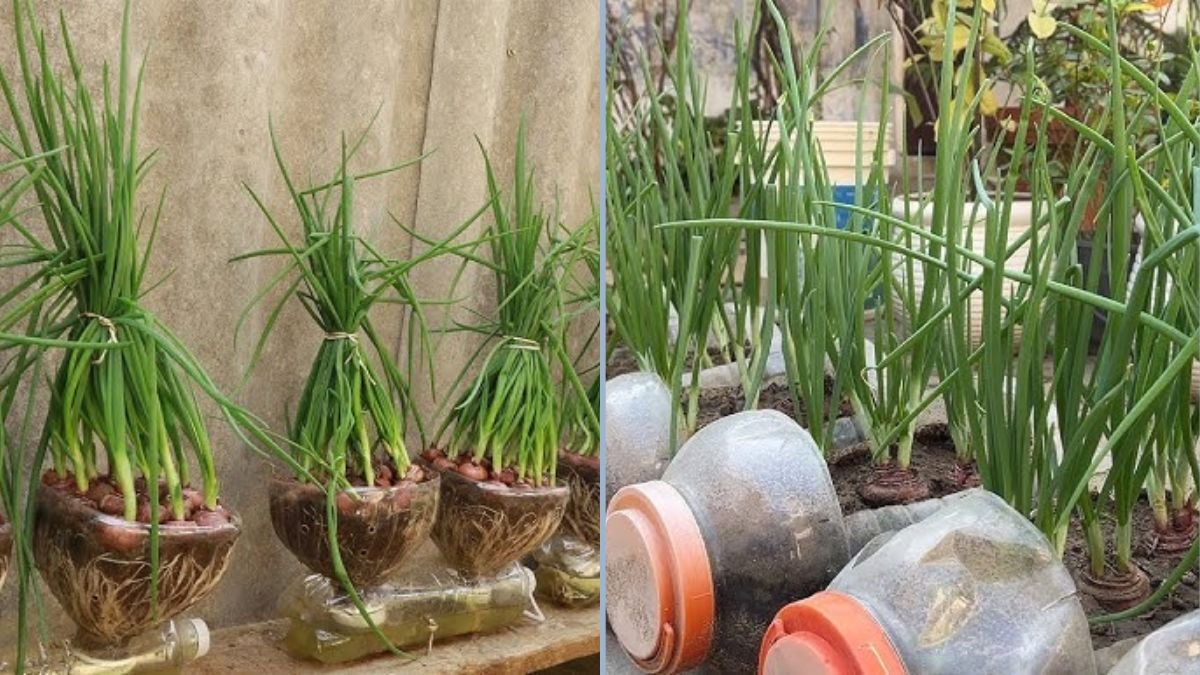Onions are a staple ingredient in kitchens worldwide, adding flavor and nutrition to countless dishes. But what if you could grow your own fresh onions at home, even without a traditional garden? With a simple plastic bottle and a few basic materials, you can cultivate onions at home, enjoying fresh greens and even full bulbs with minimal effort.
Growing onions in plastic bottles is a space-saving, beginner-friendly method that’s perfect for apartment dwellers, small-space gardeners, or anyone looking to grow vegetables sustainably. This guide will walk you through how to grow onions in plastic bottles at home, from planting to harvesting, with tips to maximize growth and yield.
Why Grow Onions in Plastic Bottles?
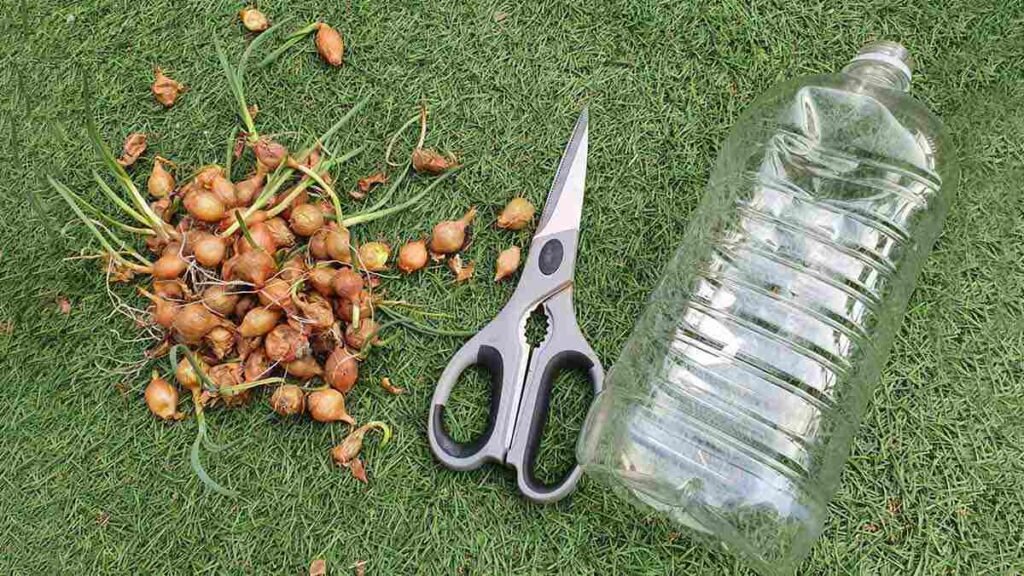
Plastic bottle gardening has become popular for several reasons:
- Space-Saving: Ideal for balconies, windowsills, or small patios.
- Cost-Effective: Reuse old bottles instead of buying pots.
- Eco-Friendly: Reduce plastic waste while growing your own food.
- Beginner-Friendly: Requires minimal gardening knowledge.
- Quick Harvest: Onion greens grow rapidly, and bulbs develop over time.
This method makes it easy to enjoy fresh, home-grown onions year-round, even if you don’t have a backyard garden.
Materials You’ll Need
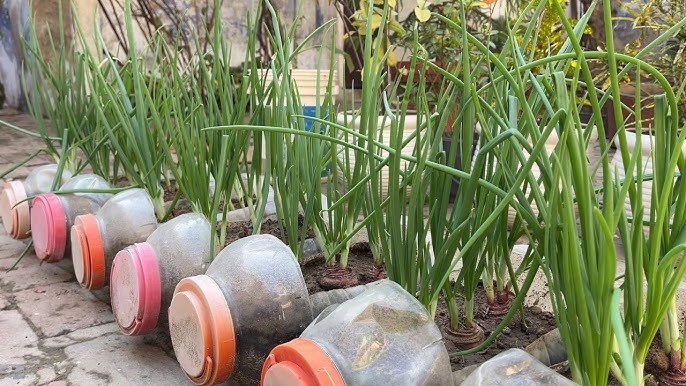
Before you start, gather the following items:
- Plastic bottles (1.5–2 liters recommended)
- Sharp scissors or a knife
- Onion bulbs (firm, healthy, and preferably untreated)
- Potting soil or a mix of compost and garden soil
- Water
- Optional: Fertilizer for faster growth
These materials are inexpensive and readily available, making bottle gardening accessible to anyone.
Step-by-Step Guide to Growing Onions in Plastic Bottles
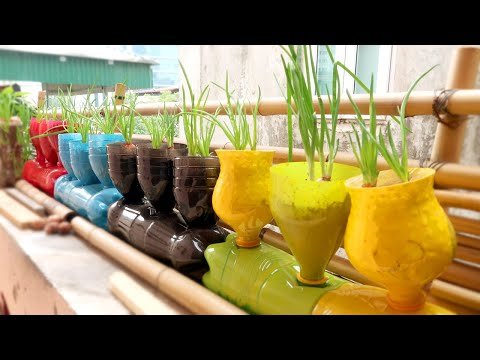
Step 1: Prepare the Plastic Bottle
Start by cleaning the bottle thoroughly to remove any residue or labels. Cut the bottle horizontally about one-third from the top.
- Bottom portion: This will hold the soil and onion.
- Top portion: Can be inverted as a mini-greenhouse to retain moisture or used as a funnel for watering.
Next, make several small drainage holes in the bottom of the bottle. Proper drainage prevents waterlogging, which can cause root rot and other issues.
Step 2: Prepare the Soil
Onions grow best in loose, nutrient-rich soil. Fill the bottle about three-quarters full with a mixture of:
- Garden soil or potting mix
- Compost or organic fertilizer
Make sure the soil is not compacted—onion roots need space to grow and develop. Leave some space at the top to make watering easier.
Step 3: Prepare the Onion
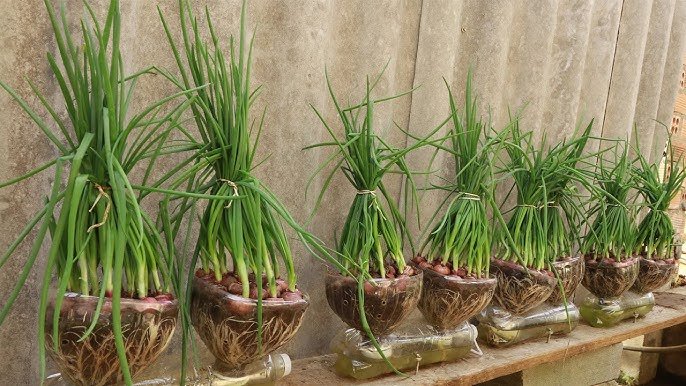
You can grow onions in plastic bottles using:
- Whole bulbs: Use firm and healthy onions. Trim the top if necessary but keep the root end intact.
- Cut bulbs: Use the root portion of an onion; it will sprout new green shoots and roots.
A healthy onion base is crucial for successful growth.
Step 4: Plant the Onion
Place the onion in the soil with the root side down, leaving the top portion exposed. Firm the soil gently around the onion to support it.
Tip: If planting multiple onions in a single bottle, space them at least 2–3 inches apart to prevent overcrowding.
Step 5: Watering
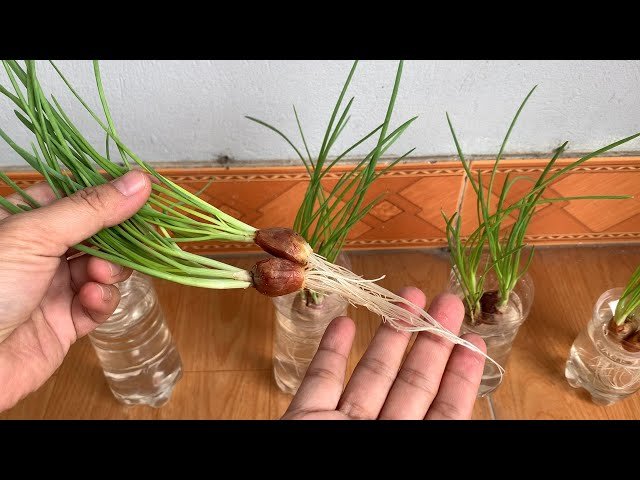
Water the soil thoroughly after planting. Keep the soil consistently moist but not soggy.
- Water once daily or every other day, depending on your environment.
- If the topsoil feels dry, it’s time to water again.
Tip: Place a tray beneath the bottle to catch excess water if you’re growing indoors.
Step 6: Provide Sunlight
Onions need at least 4–6 hours of sunlight daily to grow strong and healthy.
- Place the bottle near a sunny window, balcony, or outdoor area with good light.
- If natural light is limited indoors, consider using an LED grow light.
Proper sunlight ensures strong green shoots and healthy bulb development.
Step 7: Fertilizing
While onions can grow in plain soil, fertilizing encourages faster growth and larger bulbs.
- Use organic compost or liquid fertilizer every 2–3 weeks.
- Avoid excessive nitrogen, as too much can produce leafy greens at the expense of bulb formation.
Pruning and Maintenance
Pruning helps your onion plant grow efficiently and produce more edible greens:
- Trim yellow or damaged leaves: Prevents disease and encourages new growth.
- Pinch tips: Encourages bushier green shoots for more harvestable leaves.
- Ensure airflow: Adequate space between plants prevents mold and fungal growth.
Regular maintenance keeps your onions healthy and productive.
Harvesting Onions from Bottles
Onions grown in plastic bottles can be harvested in two ways:
- Harvesting Onion Greens:
- Cut tender green shoots 1–2 inches from the base.
- Leave the root portion to continue producing new greens.
- Harvesting Full Bulbs:
- Wait 90–120 days until the bulbs are mature.
- Gently remove the bulb from the soil to avoid damage.
- Optional: Leave some bulbs in the bottle to sprout again for a second harvest.
Tip: Regularly harvesting greens encourages more growth and keeps the plant productive.
Tips for Successful Onion Growth in Bottles
- Choose healthy onions: Fresh, firm onions sprout faster and grow better.
- Keep soil loose: Compacted soil restricts root and bulb development.
- Avoid overwatering: Moist soil is ideal; waterlogging causes rot.
- Provide sunlight: Ensure 4–6 hours of sunlight daily for healthy growth.
- Prune regularly: Remove damaged leaves to promote new shoots.
- Fertilize occasionally: Organic fertilizer encourages faster growth and bigger bulbs.
By following these steps, you can have a continuous supply of fresh onions right from your plastic bottles!
Benefits of Growing Onions in Plastic Bottles
- Cost-Effective: Save money by growing your own onions.
- Eco-Friendly: Repurpose plastic bottles instead of throwing them away.
- Space-Efficient: Perfect for apartments or small urban spaces.
- Quick and Continuous Harvest: Onion greens grow quickly and bulbs mature over time.
- Educational and Fun: Great for beginners and kids to learn about gardening.
This method turns simple kitchen scraps into a productive, sustainable mini-garden.
Health Benefits of Onions
Onions are packed with nutrients and offer numerous health benefits:
- Vitamin C: Supports immunity and skin health.
- Antioxidants: Combat inflammation and oxidative stress.
- Sulfur Compounds: Promote heart health and may help regulate cholesterol.
- Fiber: Aids digestion and supports gut health.
By growing onions at home, you get fresh, pesticide-free, and nutrient-rich produce.
Conclusion
Growing onions in plastic bottles at home is a simple, sustainable, and beginner-friendly gardening method. With just a few materials—plastic bottles, soil, water, and healthy onions—you can cultivate onion greens and even full bulbs in a small space.
This method not only saves money but also reduces waste and allows you to enjoy fresh, home-grown onions year-round. Whether you want tender greens for cooking or full bulbs for storage, bottle gardening is practical, fun, and rewarding.
Start with a few bottles today, follow these steps, and in just a few weeks, you’ll be harvesting fresh onions straight from your home garden. Your kitchen will never run out of onions again!
